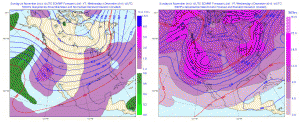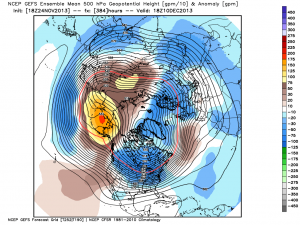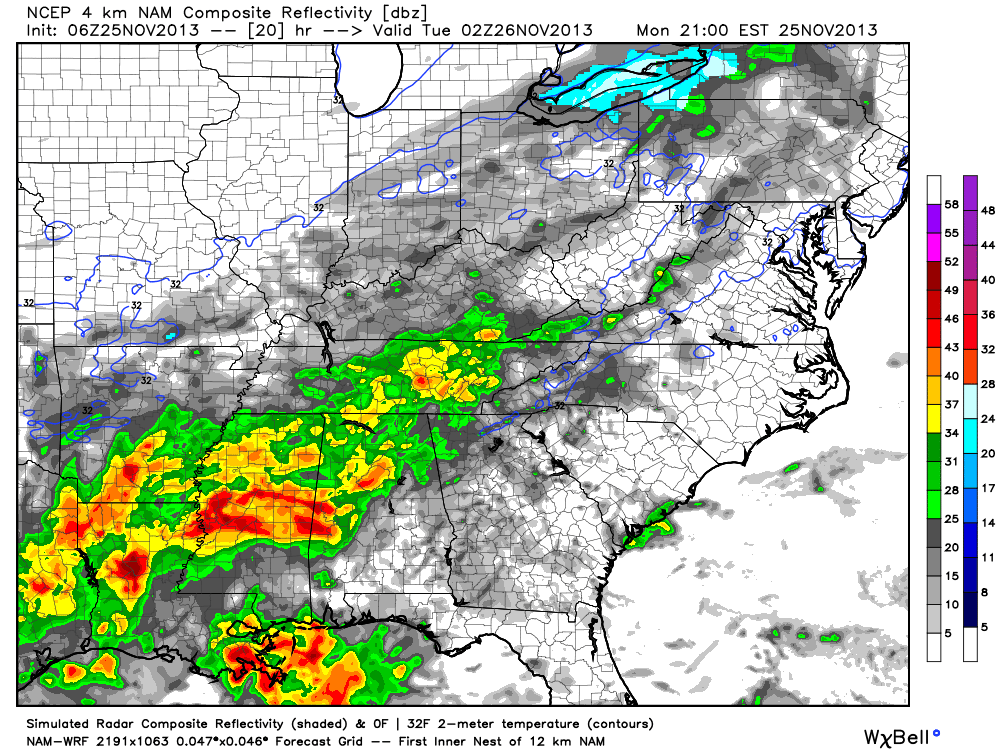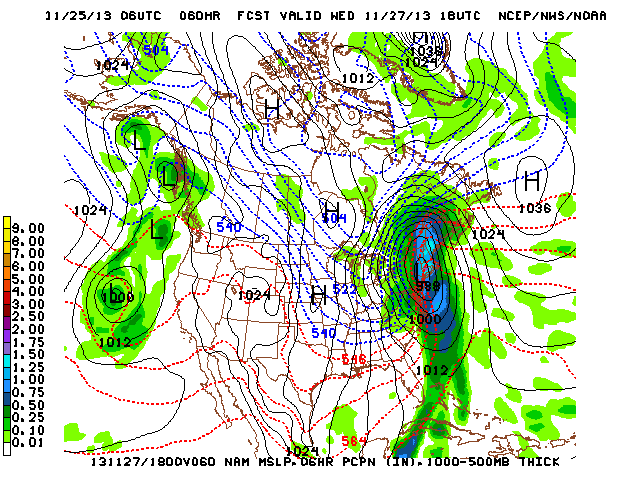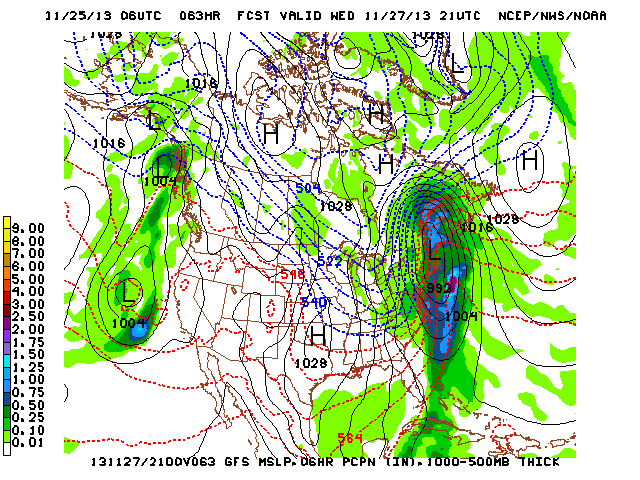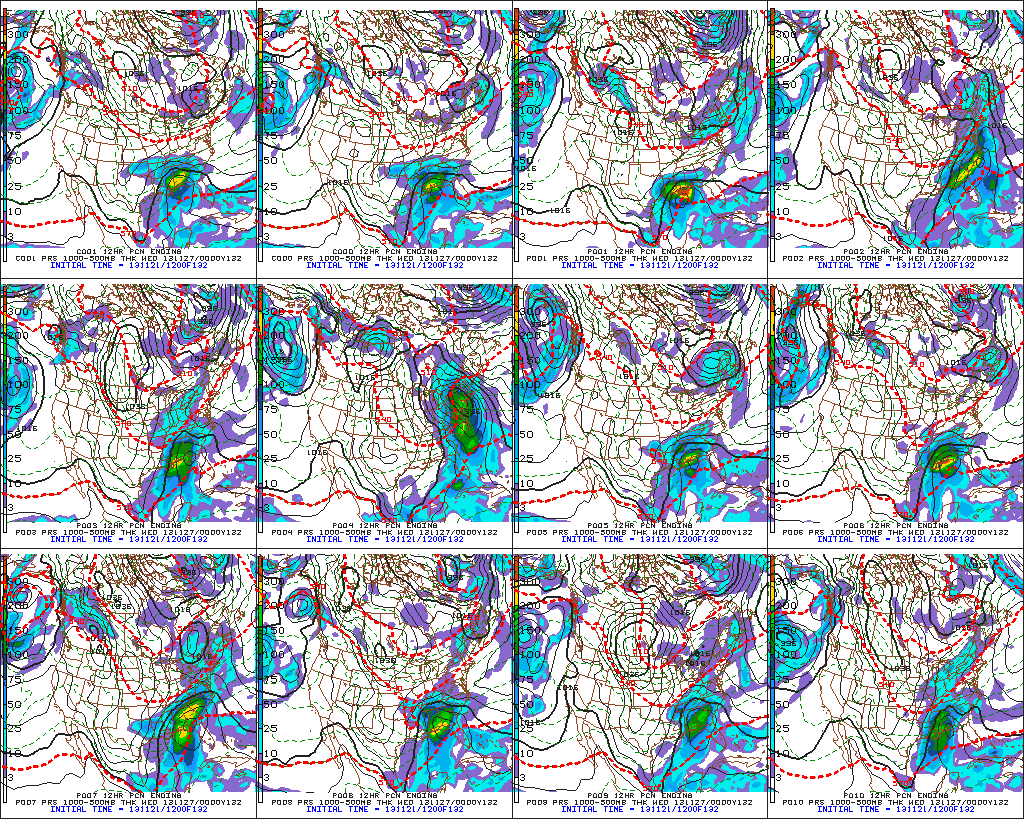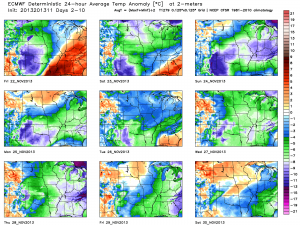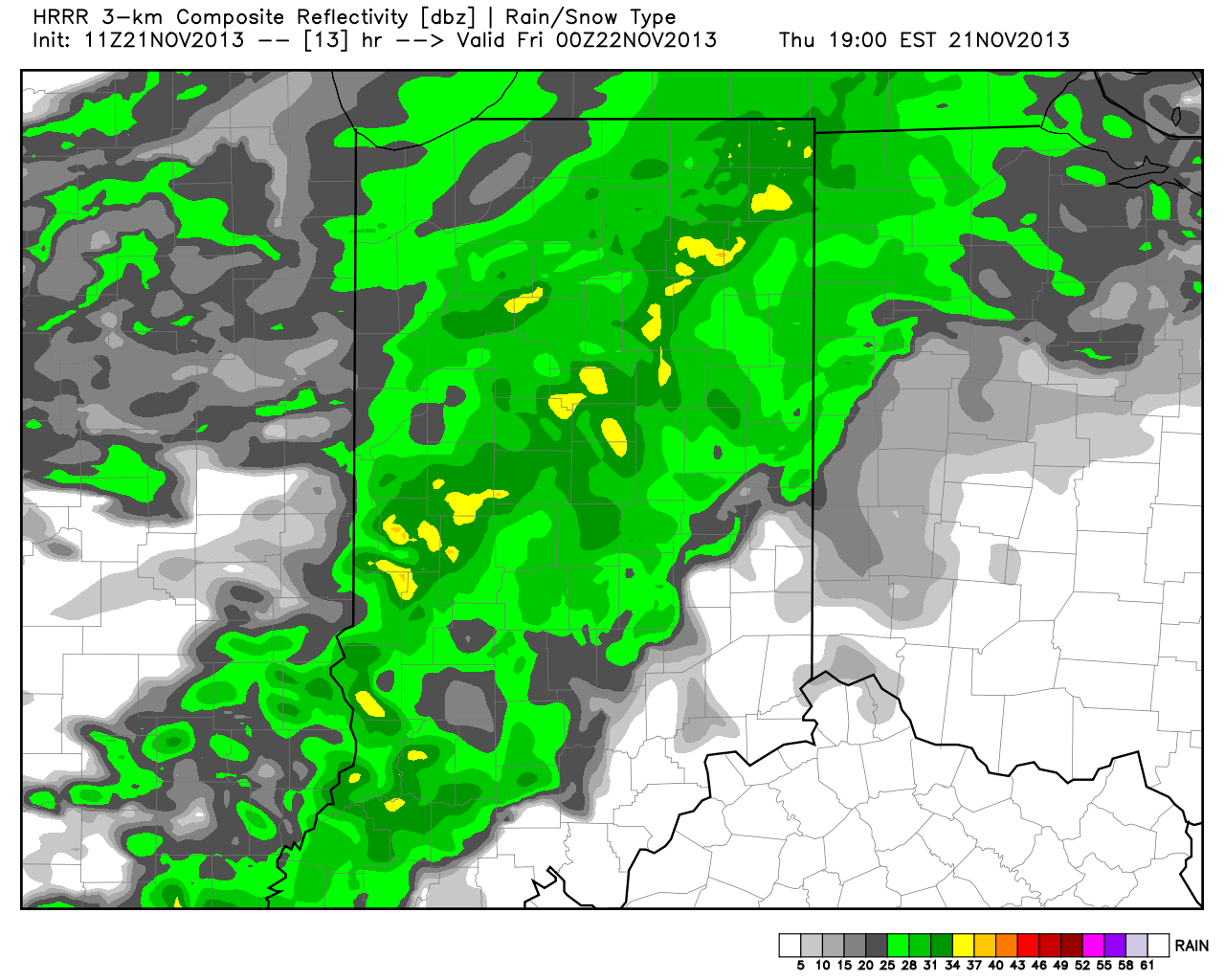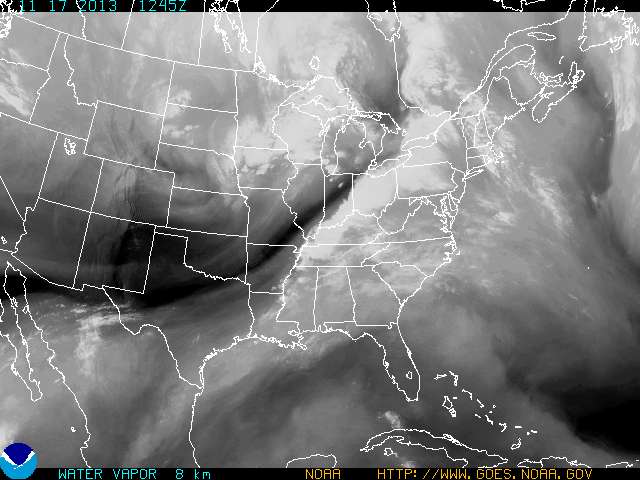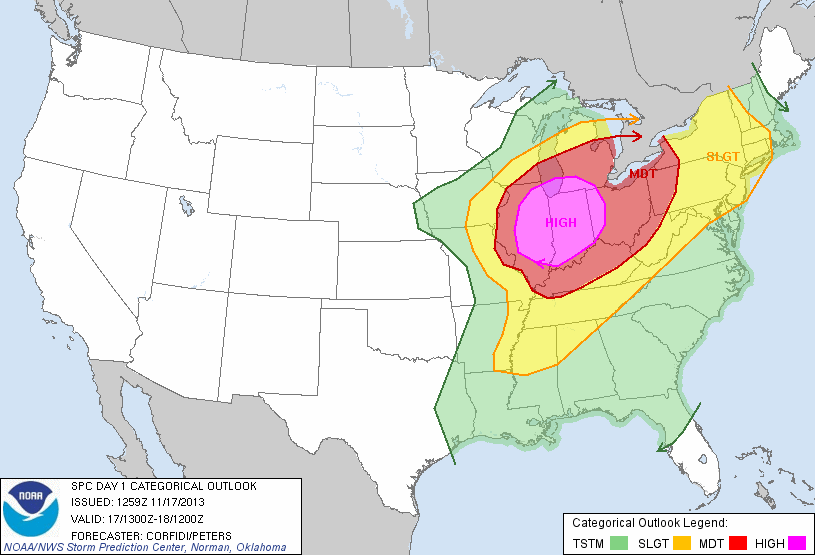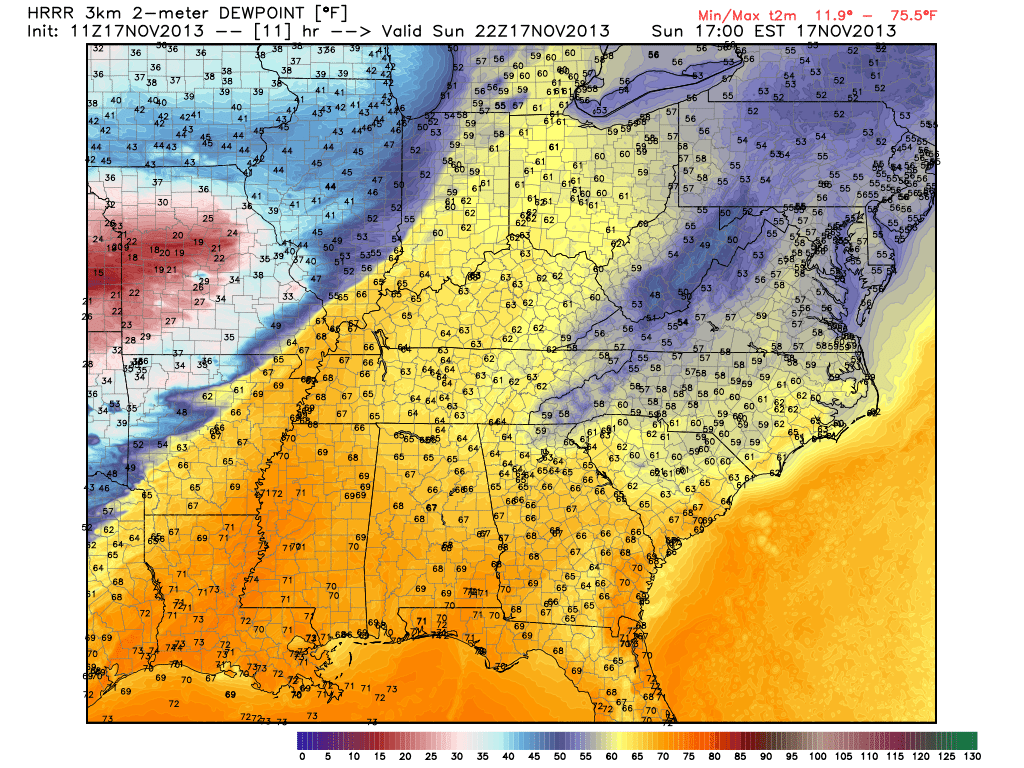As we approach the all-important holiday travel season, I thought it would be nice to review what some of the data suggests in the long range sense. While nothing is “set in stone” talking about weather 2-3 weeks out, we feel pretty confident in the overall idea of a colder than normal pattern and one that’s also potentially wintry- from a precipitation perspective. The specifics with each storm will have to be handled as they come.
Let’s look at some of the data. BTW, I want to give full credit to the awesome model suite that can be found at Weatherbell Analytics for some of these images. Be sure to check them out at weather bell.com.
First, we’ll take a look at the Canadian ensembles, centered on the 8-16 day period. Note the tongue of cold coming out of western Canada, extending southeast and encompassing the Ohio Valley region. Folks, this is significant cold forecast off the Canadian ensembles as temperatures are suggested to average 5-7 degrees (C) below normal.
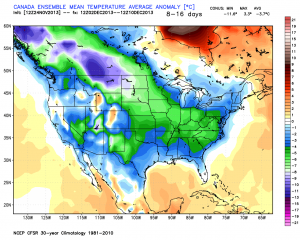
The latest GFS ensembles also suggest widespread colder than normal temperatures over the upcoming couple weeks. Similar to the Canadian (above), the GFS suggests temperatures average 5-7 degrees celsius below normal.
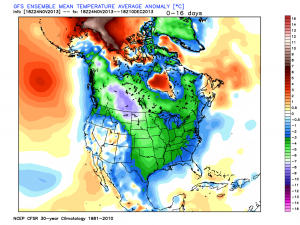
Latest European ensemble data suggests a cold look as well, but one that also may feature a day or two above normal (over the next couple weeks). The latest ensemble control run highlights the threat of some bitterly cold arctic air plunging south towards the second week of December (posted below). We’ll continue to monitor this in the days to come.
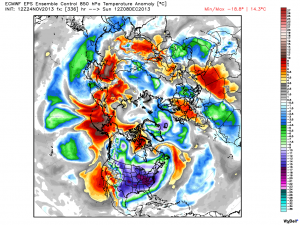
Here’s a look at the latest CFSv2. While it’s in stark contrast to only a couple of weeks ago (in its December forecast), the model is now onboard with most other data in forecasting a colder than normal December for our region.
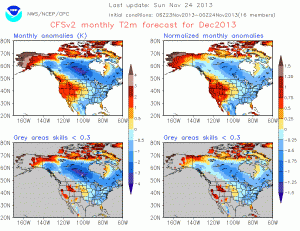
It has to be pointed out that all of the cold data is forecast during a time where the three “major” teleconnections really aren’t in the most ideal spots for eastern cold. Typically, cold lovers across the eastern United States want a negative AO and NAO with a positive PNA. The NAO and AO are forecast to be very “sporadic” over the course of the upcoming 7-10 days while the PNA is forecast to go back negative. That said, the NAO has the biggest influence on our weather from January through March (we’ve covered this in posts in the archives). The expansive early season snow and ice pack through western Canada is having it’s say with a couple of early season “brutal” cold shots here (it’s very rare to get this kind of cold so early in the season). We’ll continue to monitor these teleconnections moving forward for any sort of a more defined signal that may begin to come to fruition.
Speaking of snow and ice cover; look at how much more territory across the Lower 48 is covered with snow and ice compared to this date (November 24th) last year. Impressive, huh?
November 24, 2012 (11.8% covered in snow)

November 24, 2013 (37.8% covered in snow)

As we look closer at the near term, there’s a chance of some light snow moving in Monday evening (not a huge deal, but some light accumulations of a dusting to half an inch are possible). Scattered snow showers will also blow into central Indiana Wednesday as a reinforcing shot of fresh arctic air blows in prior to Thanksgiving.
In the mid range, both the GFS and European ensembles (below) suggest an “intriguing” look for the first 10 days of December for the potential of a more widespread winter weather maker. It’s far too early for details, but with arctic air being supplied into a pattern that looks to have a southern branch beginning to flex it’s muscle, we’ll have to remain on our toes as we go into December… Here’s wishing you a very happy and healthy Thanksgiving, complete with safe travels!
